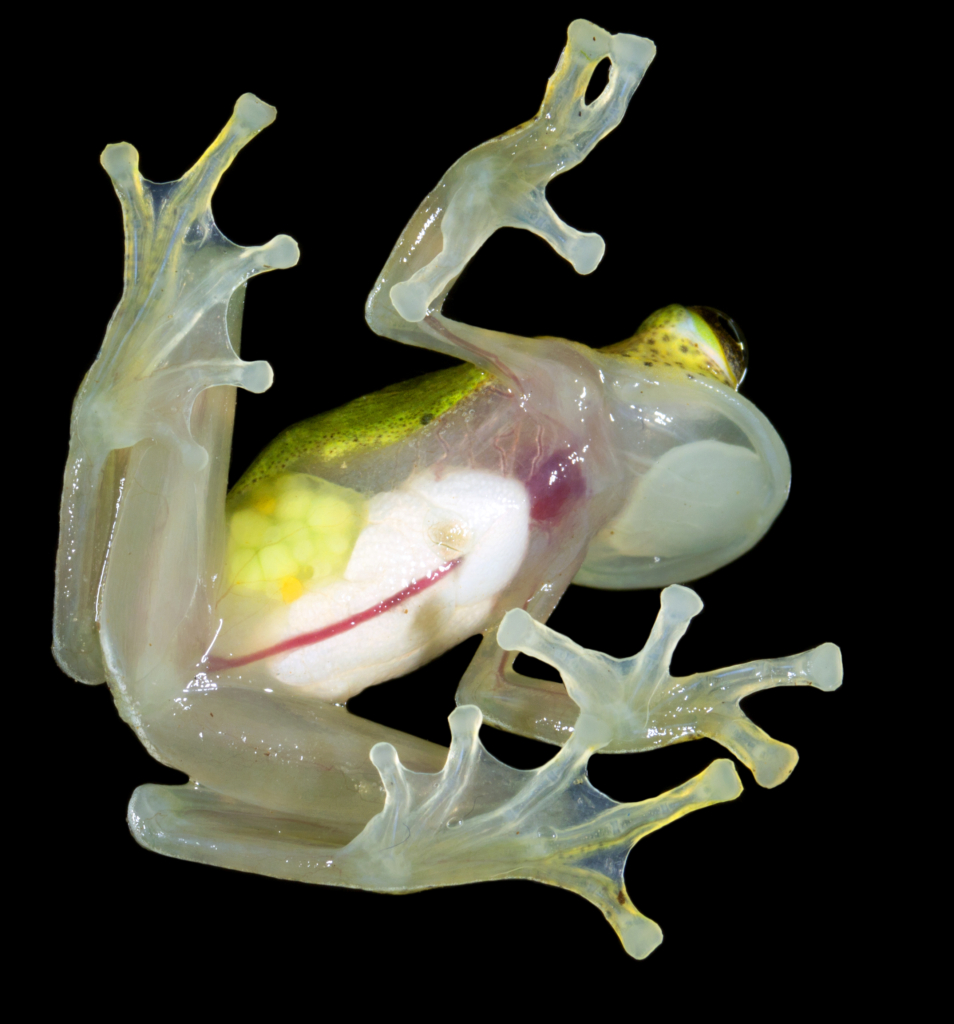Did you know that glass frogs can achieve transparency by hiding circulating erythrocytes when sleeping?
These tiny amphibians live in the tropical lowlands and mid-elevation forests in the Amazon. They are about 30 cms long and can apparently make themselves almost invisible in an attempt to avoid predators. Fleischman’s glass frogs have white translucent skin on their belly through which organs (eg heart) are visible. They have evolved see-through versions of some organs but have also developed tricks for limiting their visibility.
In a recent paper in Science, the authors (Taboada and colleagues) demonstrated that glass frogs stored more than 80% of their erythrocytes in their liver when sleeping. As red cells strongly absorb blue and green light, making them visible, vertebrates cannot achieve transparency. Besides exhibiting invisibility the remarkable phenomenon is that there are no thrombotic events following this accumulation of red cells in the liver. The authors claim that a lack of thrombotic events would require biochemical factors and/or structural changes in red cells interacting with clotting factors.
This strange frog may provide new insights into thrombotic events in humans.

Read more:
Greenwood V. Adapted to hiding in plain sight. THE NEW YORK TIMES, International edition. Saturday-Sunday January 14-15, 2023.
